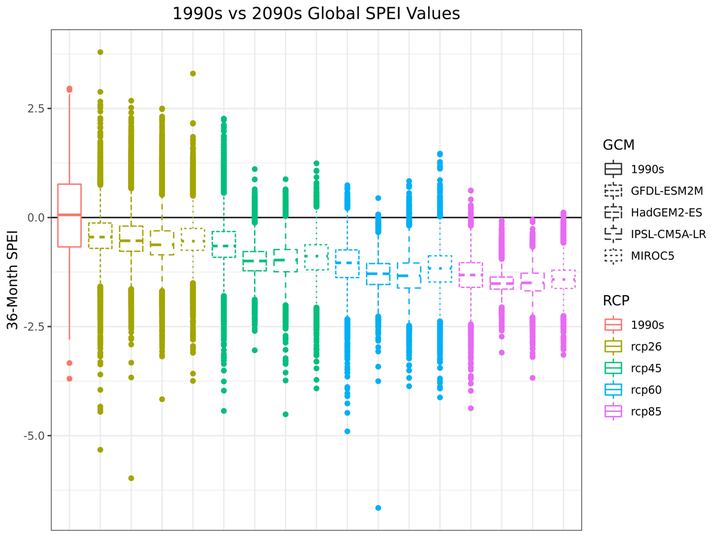Scenarios of Child Mortality

Over the previous few decades, globally rising levels of wealth, maternal education, and sanitation have led to an unprecedented reduction in child mortality, particularly in middle-income countries. However, in some parts of the world, mortality rates remain stubbornly high. Furthermore, rising temperatures and increasingly extreme precipitation caused by climate change will affect crop production, food security, sanitation infrastructure, and disease vectors, ultimately increased risk of future child mortality in vulnerable areas. Given these twin processes – increasing levels of development as well as an increasingly extreme climate - great uncertainties remain about potential futures for global child mortality.
To better understand how the risk of child mortality varies with extremes in climate, we draw on a vast dataset of 6.5 million children from 59 developing countries, with each child matched to local climatic, economic, and social variables over the course of their lives. We find that various indicators of development are associated with lower mortality risk, while climate extremes are associated with higher mortality risk. We further find that the types of climate extremes most associated with mortality are strongly dependant on the duration of the shock, with both short-term rainfall excesses and long-term rainfall deficits associated with a greater risk of mortality.
Finally, to assess how future trajectories of development, demographic change, and climate change could affect child mortality risk, we draw on five different scenarios of the future from Shared Socioeconomic Pathways (SSPs) coupled with bias-corrected climate models from the Inter-Sectoral Impact Model Intercomparison Project (ISIMIP). We fit a model based on our historic dataset of child mortality and use it to predict potential future rates based on these scenarios. We show what the various scenarios could mean for child mortality outcomes and highlight the regions of the world potentially most vulnerable to climate shocks.